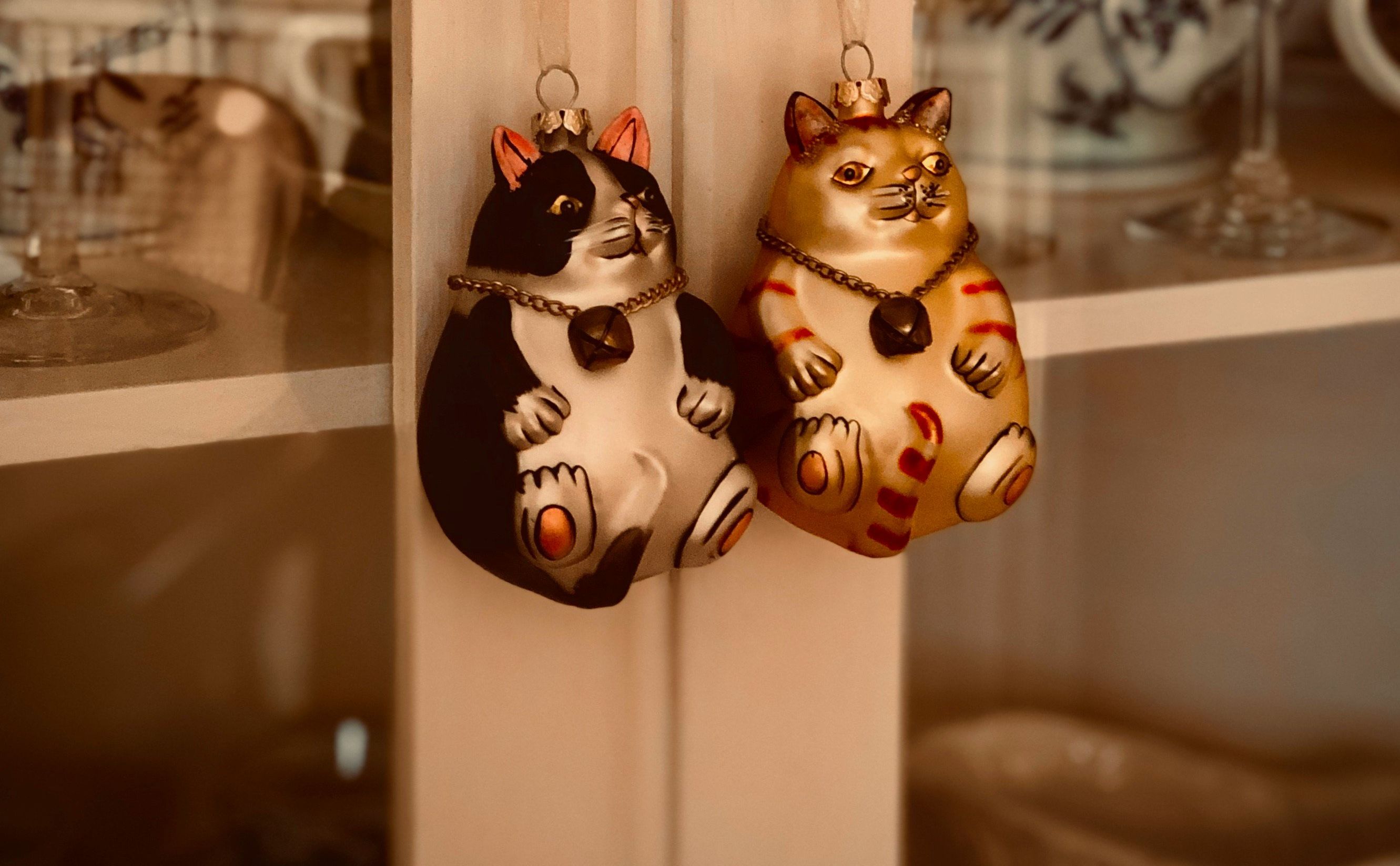Younger generations are torn over inheriting boomer heirlooms. Here are 4 helpful tips.
The generational divide on this front is a big one.

There are kind and gentle ways to handle hand-me-downs.
As the baby boomer generation reaches their "golden years," many of them are starting to think about what to do with their earthly possessions, much to the chagrin of some of their Gen X, millennial and Gen Z descendants.
How many of us really want to take over our grandma's collection of dolls or plates when we have no interest in collecting ourselves? How many people have homes filled with furniture we actually like, only to be offered antiques and heirlooms that we have neither the desire nor room for? What about china sets, artwork and other things our elders have loved that they want to see passed down in the family that no one in the family really wants?
It's a delicate road to navigate, as a post on X illustrated. Jodi-Ann Quarrie shared a screenshot of a story a man shared about his wife fighting with his mother-in-law about the china sets she wanted her children to have. She had four adult children and four sets of china for them to divvy amongst themselves, but all four kids refused. An argument ensued about how none of the china had ever been used, even on special occasions, and culminated in the wife telling the mother-in-law that she was going to use the plates as frisbees after she dies.
People's reactions to the story were mixed. Some pointed out that there's no reason for someone to say something so cruel to a family member (or anyone, for that matter). Others felt that the mother-in-law was being unreasonable by not accepting no for an answer.
Extreme as the story may have been, there is a clear generational divide between the post-Depression era folks who think passing down heirlooms is generous and the generations that are accustomed to replacing things every few years because of planned obsolescence. There is also a divide between people who attach their life story to their belongings to the point that if their things aren't valued then neither are they, and people who don't tie memories or sentimentality to material things at all.
How do we bridge these divides? Each family dynamic and situation is different, of course, but here are four principles to keep in mind if you're on the receiving end of an heirloom offer you don't really want.
1) Don't diminish the value—either monetary or sentimental—of what an elder is offering.
These things may mean nothing to you, but they obviously mean something to the person who wants you to have. There's no need to hurt their feelings by being brazen about how their outdated furniture isn't really worth anything anymore or to point out that you have no emotional attachment to it. That all might be true, but is it necessary to share that with someone who is nearing the end of their life and feeling sentimental? No. It doesn't meant you have to take it, either, but a little empathy, even if it's not how you would feel about your own belongings, goes a long way.
2) If they're trying to give you something now and you really don't want it or have room for it, offer alternatives.
It's perfectly reasonable to tell a loved one that on a practical level you simply don't have the space for something. What the person usually wants is to know that a piece of them is going to be carried on as a physical memory and proof of their existence, so offer them a way to do that in a way that works for you.
Try something like this: "I would love to have something of yours that is meaningful that we can pass down, but we already have all the furniture we are able to manage—is there something like a piece of jewelry or a photo album or something else that we could pick out together as an heirloom for our side of the family?"
3) Be kind about their wishes while they're still here.
It's not easy getting older, and people's feelings about their life and death are worthy of consideration and compassion. If it brings an older person joy to see belongings they value being passed down while they're still alive, it might be worth letting them have that joy. Again, they might just want to know that their memory is going to live on.
It's difficult for us to imagine what it's like to be old when we're young, but it's not too hard to understand the desire to be remembered. That desire manifests differently for different people. Kindness can look like taking the items with gratitude and waiting until they pass away to give them away. It can also be gently refusing them for now, telling them it makes you happy to see them enjoying their things, and reassuring them that you'll make sure their items are taken care of when they're no longer here. (Taking care of doesn't mean keeping, but they don't necessarily need to know that detail. Honesty must be balanced with tact and thoughtfulness here.)
4) You are not obligated to hold onto something someone gave you, especially after they are gone. (But also, stay open to the idea that you might want to.)
No one is obligated to hold onto anything they don't really want. You also don't have to tell the person that you're not planning to keep their stuff—let them be at peace about it while they're here. It's perfectly okay to let go of their material things after they're gone. It's highly unlikely that they're going to care at that point.
However, it's also wise to stay open to the idea that you might actually want some of the things a loved one gives you after they pass. We never know how grief and loss are going to impact us, regardless of our relationship with someone, and sometimes people regret getting rid of all of their family members' belongings too quickly. It might be wise to just say yes to some things for now (if you are able to) and then decide what to do with them later.
Again, every situation is different, so these principles may or may not apply perfectly to your own circumstances, but the central message is to be kind and compassionate. We all have a limited amount of time here that shouldn't be wasted fighting over material things.
This article originally appeared on 4.6.24
- Mom shocked when boomer mother-in-law refuses to be called grandma and demands royal title ›
- Teacher admits there are 11 things that Boomer parents totally got right ›
- People admit the one thing that Boomers really got right and some folks are uncomfortable ›
- Mom explains "dishonest harmony," the Boomer parenting style affecting many adults today - Upworthy ›
- Grandma's disagreement with daughter's parenting wins Millennials approval - Upworthy ›
- British zookeepers perform TikTok videos written by GenZ staff - Upworthy ›
- Millennials explain their Boomer parents' ''gramnesia.' - Upworthy ›
- Millennial hilariously fails at teaching her boomer mom gentle parenting - Upworthy ›
- Baby Boomers admit these 17 things are better than when they were young - Upworthy ›
- Millennial says boomers have it all wrong when it comes to 'luxuries' - Upworthy ›
- Gen Xers admit the 17 things that baby boomers got right - Upworthy ›
- What was normal for Gen X and boomers would shock people today - Upworthy ›
- Millennial mom shreds absentee boomer granparents - Upworthy ›
- Interior designer says having family photo 'shrines' in your house is tacky - Upworthy ›
- Millennials, Gen Xers, and even Gen Zers agree that these 'boomer' complaints are 100% correct - Upworthy ›
- Witty millennials share the secret reasons they look younger than other generations - Upworthy ›
- Millennial mom explains 3 reasons why Boomer grandparents are the worst - Upworthy ›
- 5 generations competed to see who’s the funniest. Gen X won and some boomers have complaints. - Upworthy ›
- Millennial shuts down judgy boomers by comparing cost of 'luxuries' in 1980 vs 2025 - Upworthy ›
- Psychiatrist perfectly explains why each generation approaches happiness so differently - Upworthy ›
- Family flags down exhausted UPS driver and invites him to 'make a plate' at family cookout - Upworthy ›
- Teacher admits boomer parents got some things right - Upworthy ›


 hanged cat decorsPhoto by
hanged cat decorsPhoto by